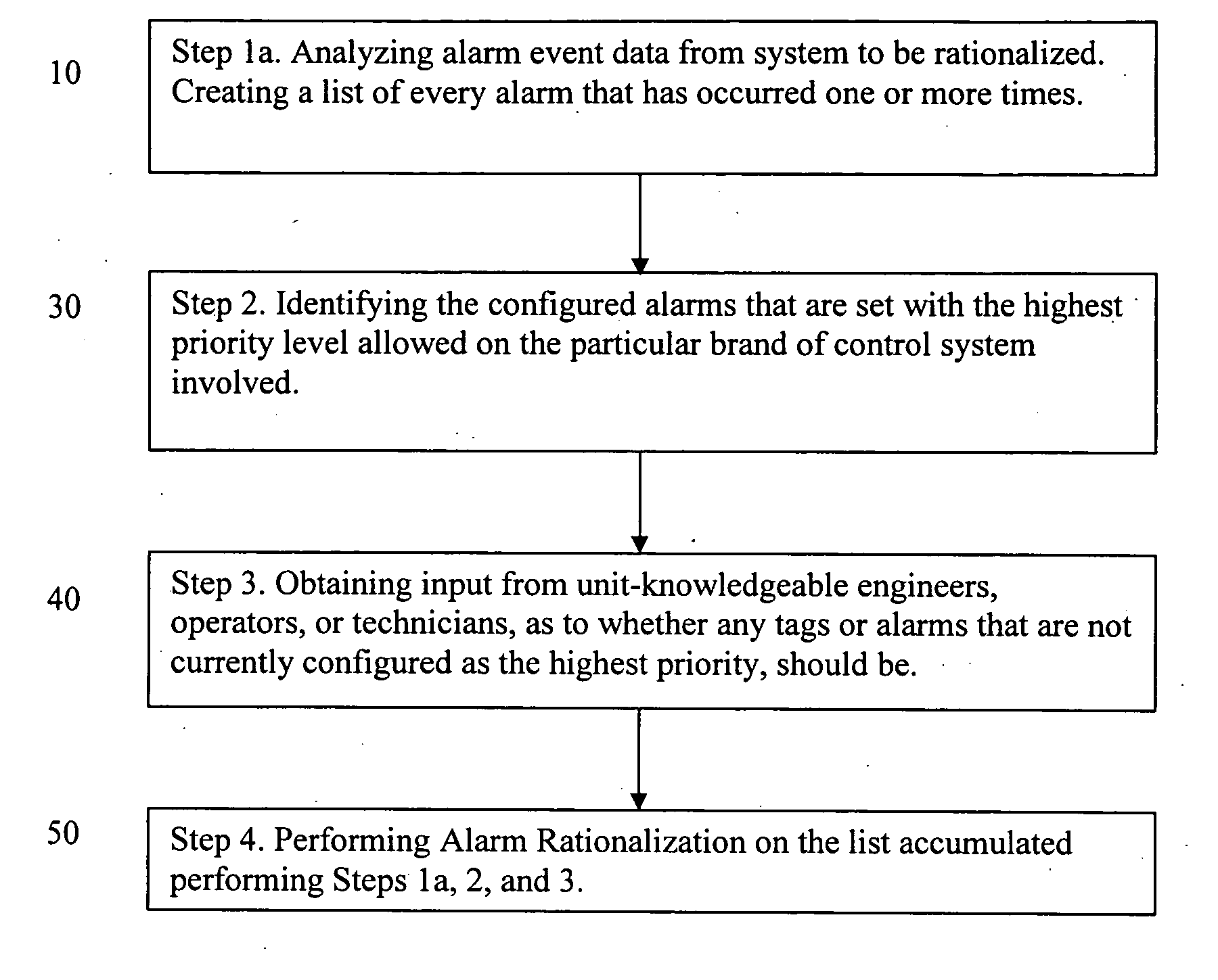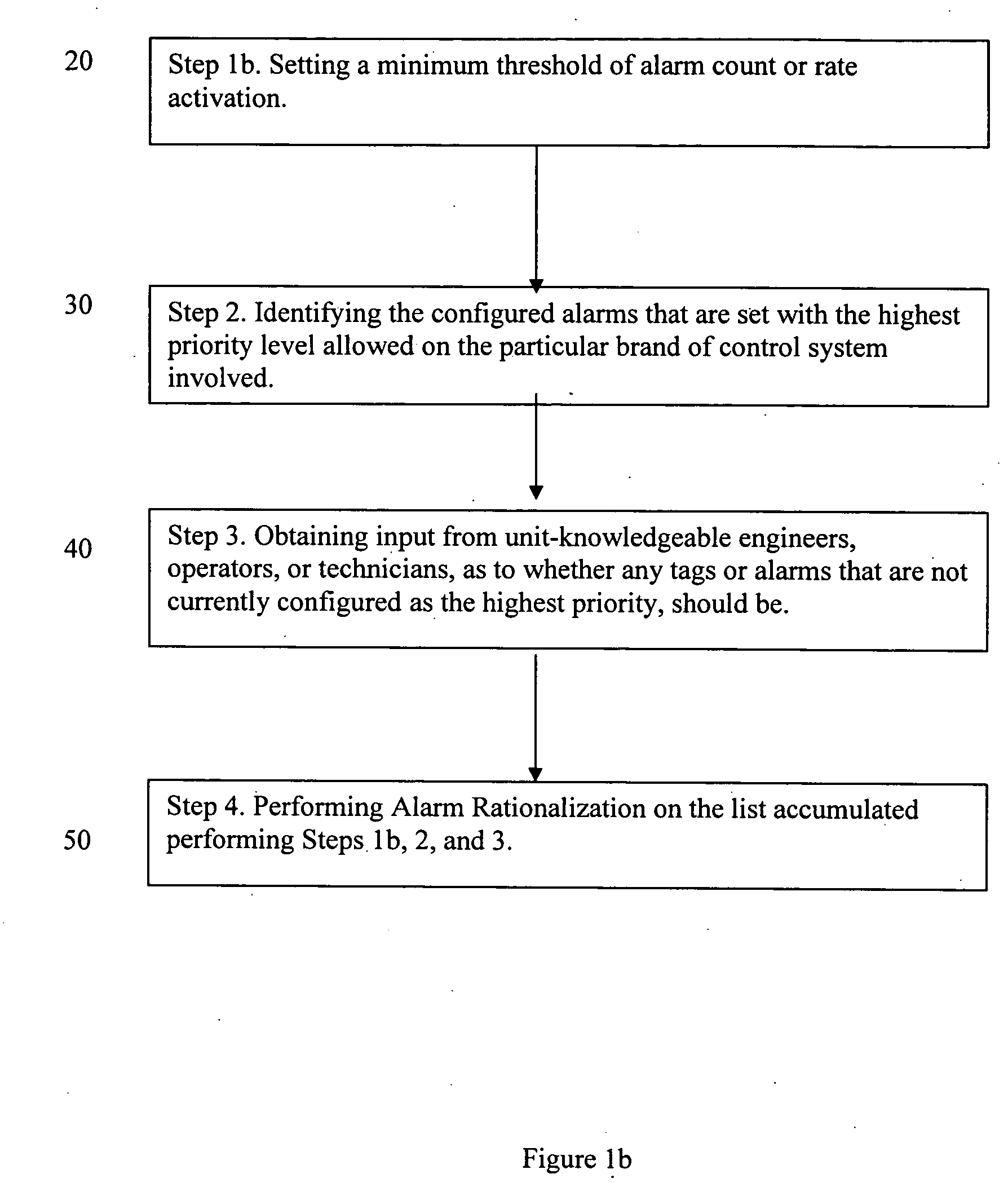Focused alarm rationalization method
a rationalization method and alarm technology, applied in the direction of burglar alarms, burglar alarm mechanical actuation, instruments, etc., can solve the problems of generating more alarm events than can be effectively handled by the operator, alarm displays are expensive to design, install and maintain, and can be quite complex and flexible in their configuration. , to achieve the effect of reducing labor intensity, reducing cost and productivity, and high quality
- Summary
- Abstract
- Description
- Claims
- Application Information
AI Technical Summary
Benefits of technology
Problems solved by technology
Method used
Image
Examples
Embodiment Construction
[0025] In one preferred embodiment, the invention is directed to a Three Step Focused Alarm Rationalization Methodology. The first step, Step 1a, is analyzing actual alarm event data from the system to be rationalized, as shown in block 10 of FIG. 1a. In a preferred embodiment, this analyzing is performed on data covering a time range of several months to a year or more. At least 6 months of data is a reasonable preferred minimum. Using a year's data has the advantage that any seasonal effects that influence the production of alarm events will be included. In a preferred embodiment, the analysis consists of counting and ranking all alarm events, separated by tag and alarm, from the most frequent to the least frequent during the time period. In a preferred embodiment, the results should be arranged to look similar to this:
TagAlarm TypeCount of Alarm Events ProducedFC100HIGH Value14,312FC184LOW Value12,754TI1296Bad Value10,344PSH94OFF-NORMAL10,108
[0026] The above pattern is repeated...
PUM
 Login to View More
Login to View More Abstract
Description
Claims
Application Information
 Login to View More
Login to View More - R&D
- Intellectual Property
- Life Sciences
- Materials
- Tech Scout
- Unparalleled Data Quality
- Higher Quality Content
- 60% Fewer Hallucinations
Browse by: Latest US Patents, China's latest patents, Technical Efficacy Thesaurus, Application Domain, Technology Topic, Popular Technical Reports.
© 2025 PatSnap. All rights reserved.Legal|Privacy policy|Modern Slavery Act Transparency Statement|Sitemap|About US| Contact US: help@patsnap.com



